The Complete Runners’ Guide To Train For A Half Marathon

You’ve signed up and committed to your half-marathon goal, and now you need to figure out how to reach your personal best (PB)!
The allure of the half marathon is undeniable. It's a distance that demands respect and preparation, yet remains accessible to runners of various skill levels.
Whether you're a beginner looking to complete your first half marathon or an experienced runner aiming to shatter your PB, success in this event hinges on more than the number of hours spent running. It is a carefully crafted combination of factors like:
- Effective training structure
- Appropriate nutrition
- Adequate recovery
- Understanding your genetic predisposition, and how your body responds to exercise
Now, what do we even mean by a “carefully crafted combination?”
It’s about understanding how to get the best out of YOUR body. It is about asking:
- What types of intervals will yield the best results?
- How many long, slow runs should I incorporate?
- How do I progress my mileage safely?
- How often should I be resting?
-
What should I eat to fuel my performance?
All good questions, and ones that for most people, are difficult to answer.
Unfortunately, many of the one-size-fits-all training plans that are easily accessible online are generic in nature and meant to cater to a broad audience.
These standardized ‘recipes’ do not account for individual differences and are more about hitting the weekly target than tuning into ‘what do YOU need to drive YOUR performance’.
Limitations of generic training plans for half marathons
If you've ever googled "half marathon training plan" or "12-week half marathon training plan," you've likely encountered a plethora of generic programs. While these plans can provide a solid foundation, they come with significant drawbacks:
-
One-size-fits-all approach
Generic plans assume that what works for one runner will work for all, ignoring individual differences in fitness levels, recovery needs, and genetic predispositions.
-
Lack of individualization
These plans can't address specific questions like, "How many long runs do I need?" or "What's the best interval training for me?"
-
Suboptimal results
Without considering your unique physiology, generic plans may lead to overtraining, undertraining, or increased injury risk.
-
Group focus
These plans are designed for the average runner, not for your specific needs and goals.
To overcome the limitations of generic plans, some runners turn to personal coaches.
The role of personal coaches
Coaches bring a wealth of experience and expertise, drawing from years of knowledge and practical application. They are helpful in holistically shaping an athlete’s career and setting realistic goals. It can be a game-changer for runners.
Personal coaches can design training plans based on athlete fitness level, goals, and personal circumstances. This way, you're less likely to overtrain or pick exercises that aren't right for you. Other advantages include redefining runners’ technique, regularly monitoring progress, developing race strategy, mental and emotional support, and accountability.
However, personal coaching may not be suitable for everyone. Factors such as financial considerations, time commitments, and individual learning preferences can influence whether this approach is appropriate. Some athletes may prefer to train on their own while others might opt for group training environments.
One of the biggest missing links is integration of genetic information that can refine how personal coaches work with their athletes. Without access to a runner's genetic code, even the most seasoned coaches may miss crucial insights about how an individual's body responds to training, potentially leading to suboptimal programming.
Genetic information doesn't replace the need for skilled coaches. Rather, it adds an additional layer to more effectively monitor training progress. This synergy between traditional coaching wisdom and cutting-edge genetic science represents the future of personalized athletic training.
And this brings us to the best way to train for a half marathon.
Ready to move beyond one-size-fits-all training plans?
Train smarter, not harder with GENEFIT's DNA-powered technology.
Download the app now!The missing link: Genetics and its impact on training
The answer lies in your genes – the little segments of DNA that give every individual unique physical characteristics.
Recent scientific research has revealed that genetics are crucial in how individuals respond to exercise and training. A study by De Moor et al. (2007) found that up to 66% of athletic status is determined by genetic variability.
That's right, more than half of what makes you a power athlete is written in your genetic code.
This also means that genetics drives a substantial portion of how we experience each exercise and how the body responds to it. While factors like deliberate practice, nutrition, and support systems are important, we can't ignore the significant impact of our genetic makeup on athletic performance.
Specific genes and their associations with athletic performance
Scientists have pinpointed specific genes linked to different aspects of athletic performance – like an instruction manual for our bodies. This groundbreaking outlook is helping us figure out the best ways to prepare for a half marathon.
Here’s a quick glance:
Endurance
PPARGC1A gene affects our ability to produce energy during prolonged low-intensity exercise. Basically, it helps you burn fat and release energy during long, marathon-like runs.
Power
ACTN3, known as the "speed gene," impacts high-intensity performance and adaptation to training. It might be the key reason if you’re good at sprinting and feel an “explosive” power while working out.
Training Response
The ACE gene's I-allele links with greater VO2max (the maximum amount of oxygen your body can use during intense exercise) improvements during training. Variants of this gene can help you enhance aerobic fitness.
Recovery
IL-6R affects post-training inflammation and fatigue levels. When muscles contract during exercise, IL-6 is released, which helps with anti-inflammation.
Injury
COL1A1 influences the resilience of tendons and ligaments to damage. Your COL1A1 type can help design a plan unique to you and prevent injury.
Nutrition
CYP1A2 and ADORA2 are linked to caffeine metabolism and response, affecting how athletes can use caffeine as an ergogenic aid. Caffeine can help you stay alert and improve your athletic performance.
But it’s not a gene in isolation that points us to what exercise and nutrition habits will work for us. It’s the combinations that may direct our training efforts and diets.
While this is an emerging field of research, literature suggests that genetics influence how athletes respond to training. Hence, knowing genetic makeup would help athletes correctly optimize their training and sporting performance.
Genetic makeup is composed of genes organized into genetic pathways. And you need information about your genetic pathways to design a custom training plan.
So, what are these genetic pathways, exactly?
Genetic pathways are like your body's playbook for different functions. They're sets of instructions in your DNA that tell your body how to build muscle, use energy, or recover from a tough workout.
For athletes, these pathways are quite important. Here's why:
-
Performance Boosters
Some pathways control how your body uses oxygen or builds muscle. Knowing about these can help you train smarter and perform better.
-
Recovery Helpers
Other pathways manage how your body deals with inflammation or repairs muscle damage after a hard session. Understanding these can help you bounce back faster.
-
Injury Shields
Some pathways influence things like bone strength or the flexibility of your tendons. Knowing about these can help you avoid being sidelined by injuries.
-
Fuel Efficiency
Some pathways affect how your body processes different foods. This information can help you determine the best way to fuel your workouts and competitions.
Each athlete's genetic pathways are a bit different. That's why two athletes might respond differently to the same training plan or diet. By understanding your unique genetic pathways, you can:
- Customize your training to match your body's strengths
- Choose the best foods to power your performance
- Know how much rest you really need between workouts
- Pick the most effective supplements for your body
How GENEFIT is upping the Marathon game
GENEFIT is a first-of-its-kind app that helps you discover exactly this information—your genetic pathways. Giving you access to six performance categories, the app guides your training progression as it relates to:
- Training:
The types of workouts that will produce the best fitness improvements for you.
- Injury Risk:
Your risk of potential injury, and avoiding this as far as possible.
- Recovery:
The amount of recovery needed between workouts to enhance how you adapt to your training.
- Body Composition:
Your energy “balance” or how much energy you consume versus take in.
- Supplements:
The natural ergogenic supplements that may make you faster.
- Energy Levels:
How to fuel our body with the right nutrients to promote stable energy levels and mental alertness.
Use Case Study: Half Marathon Training with Genetic Insights |
|
|
PERSONA Goal: Complete first half marathon without injuries Previous running experience: Have finished three 5Ks and two 10Ks Genetic Testing Results:
|
|
|
TRADITIONAL TRAINING APPROACH Before genetic testing, the runner followed a generic 12-week half-marathon training plan found online. The plan included:
Challenges Faced:
|
|
|
GENETICS-OPTIMIZED TRAINING PLAN |
|
|
Endurance-responsive Training
Recovery Optimization
Nutrition and Supplementation
Injury Prevention
Training Load Management
Risk Scoring: Based on daily workouts tracked on GENEFIT App |
Wouldn’t it be great if you had a genetic coach who could think for you and structure this advice into something simple and actionable for your half-marathon?
Reducing the trial and error and giving you confidence in the demands you are placing on your body.
Why is GENEFIT the answer?
➡️ Personalized training plans based on your DNA
➡️ Daily Session Scores to evaluate workout effectiveness
➡️ Fitness and Load scores to track progress and prevent overtraining
➡️ Real-time injury prevention alerts
➡️ Genetically-guided daily nutrition and lifestyle advice
➡️ Guidance on the use of natural ergogenic supplementation
Download the GENEFIT app now and experience the future of training.
GET STARTEDYour Genetics Is One Half. Personalized Training Is Another.
Training for a half marathon is a significant time commitment. However, you can make every minute of your preparation count by working smarter, not harder.
GENEFIT's genetics-based approach offers a revolutionary way to optimize training, reduce injury risk, and achieve half-marathon goals.
Remember, there's no magic bullet in half-marathon training. But by understanding and working with your genetic predispositions, you can create a training plan that's truly tailored to your body's needs and capabilities.
Whether you're following a beginner half marathon training plan or aiming for a new personal best, GENEFIT can help you realize your full potential and cross that finish line stronger than ever.
So, are you ready to discover the best way to train for a half marathon – your way? Download the GENEFIT app today to get started.
FAQs
How many weeks do you need to train for a half marathon?
Most runners need about 12 to 16 weeks to prepare for a half marathon. But here's the thing – your perfect training period might be different. If you're already running regularly, you might be ready in 8-10 weeks. On the flip side, if you're starting from scratch, you might want to give yourself 20 weeks or more. Remember, it's not just about being able to run 13.1 miles – it's about running it well and recovering quickly. Your genes play a big role in how quickly you adapt to training, so a personalized approach like GENEFIT can help you nail down the ideal training period for your body.
How do beginners prepare for a half marathon?
Start slow and be consistent. Here's a basic game plan:
- Build a base: Start with regular runs 3-4 times a week. Don't worry about speed or distance yet – just focus on making running a habit.
- Gradually increase your long run: Once you're comfortable running regularly, start increasing the distance of one run each week. Aim to increase by about 10% each week.
- Mix it up: Include different types of runs in your training. Easy runs, tempo runs, and interval training all have their place.
- Cross-train: Don't just run. Include Strength Training and other low-impact activities to build overall fitness and prevent injuries.
- Rest and recover: This is crucial. Your body needs time to adapt to the training.
- Fuel properly: Learn what foods work best for your body during training and races.
Remember, everyone's journey is different. Your genes influence how you respond to training, so what works for your running buddy might not work for you. That's where a tool like GENEFIT can be a game-changer, helping you create a plan that's tailored to your genetic makeup.
How long does it take to get in shape for a half marathon?
This is a bit like asking, "How long is a piece of string?" It depends on where you're starting from and what you mean by "in shape." If you're already running regularly, you might be half marathon-ready in 2-3 months. If you're starting from zero, it might take 6 months or more.
But here's the important part – getting in shape for a half marathon isn't just about being able to run the distance. It's about being able to run it well, finish strong, and recover quickly. And that's where your genes come into play. Some people naturally build endurance quickly, while others might need more time. Some recover fast from hard workouts, while others need more rest days.
How long does it take to go from complete beginner to half marathon runner?
Becoming a half-marathon runner from a complete beginner is a big leap, but it's totally doable with the right approach. Most beginner-to-half-marathon programs take about 20 to 24 weeks, which is roughly 5-6 months of consistent training.
Here's a rough breakdown:
- Months 1-2: Focus on building a running habit. Start with walk-run intervals and gradually increase the running portions.
- Months 3-4: Start increasing your long run distance and introducing different types of runs (easy, tempo, intervals).
- Months 5-6: Fine-tune your training, work on race pace, and taper before the big day.
But remember, this is just a general guideline. Your beginner-to-half-marathon journey might be shorter or longer depending on your starting fitness level, how quickly your body adapts to training, and, yes, your genes.
Some people might be ready in 4 months, while others might need 8 months or more. The important thing is to progress safely and avoid injury. Rushing the process often leads to burnout or injury, which can set you back weeks or even months.




